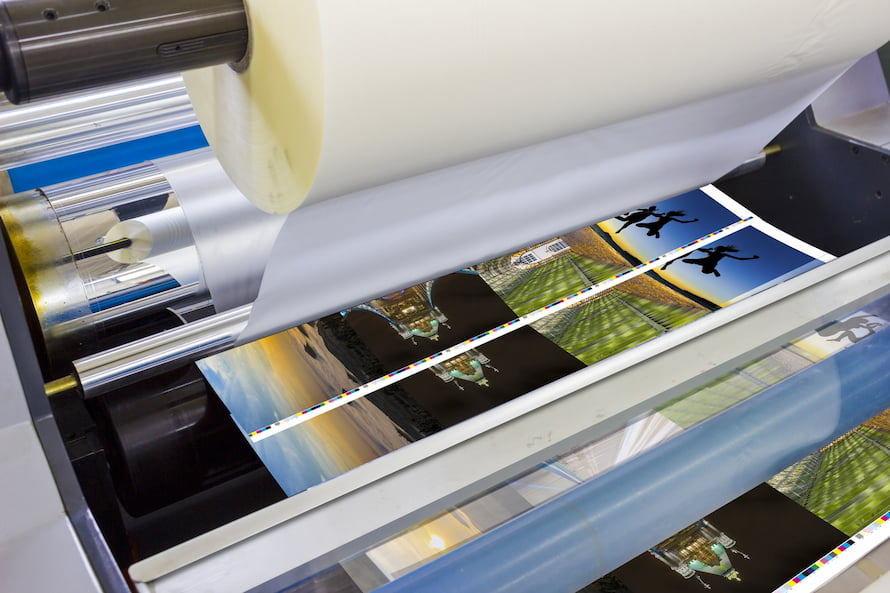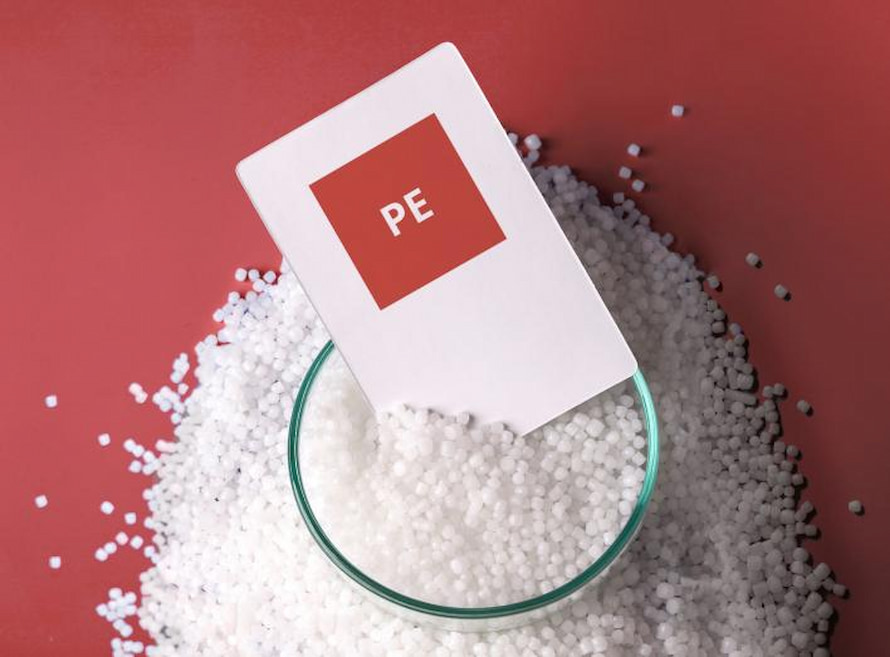Laminating pouches are one of the unique inventions, since the birth of plastic. They can solve all kinds of problems in terms of protecting products from wear and tear and from external influences. Low cost, accessibility, and durability are three of the reasons why laminating pouches are so popular.
So what are laminating pouches made of? Is this product eco-friendly and easily recyclable? The following article will give you a whole new perspective on what are laminating pouches made from as well as related information.
.jpg)
1. What is laminating pouches?
1.1. What is laminating pouches?
.jpg)
A laminating pouch is a piece of laminate film that hasan edge pre-sealed on one side. This pre-sealed edge allows the pouch to be connected to another piece of laminate film to form a pocket or pouch. Laminating on both sides of a document requires a laminating pouch, which can either be a cold pouch or a thermal pouch depending on the user's preference.
The cold pouches can be manufactured by hand, without the aid of a machine, or they can be laminated using any laminator that has a preset for cold temperatures. When it comes to sealing, thermal pouches will always need a heated pouch laminator.
Regularly, one side of a laminating pouch is typically sealed, making it suitable for use in laminating pouches. As the item to be laminated moves through the laminator, the interior of the lamination pouch is coated with a heat-activated film. This film causes the pouch to cling to the item being laminated. The print and the substrate are adhered to one another by a heat-activated adhesive that is located on the substrate side of the board.
Related: Cement Plastic Bags Manufacturing Process - The Ultimate Guide
1.2. What Are Laminating Pouches Used For?
Laminating pouches offer a protective covering by sandwiching paper items in between two layers of plastic and then sealing the pouch shut. This provides a protective surface that is flexible yet robust and can be applied all the way around. Therefore, laminating pouches can be utilized for a broad variety of purposes, including the safeguarding of documents and the production of identification cards.
Because the laminating pouches encase the page in its entirety, both the front and back sides of your document will be safely protected. They also double the document's stability and rigidity, making the document even more resistant to bending and tearing as well as more long-lasting overall.
The application of this transparent coating provides the printed parts with durability, rigidity, and protection, hence extending the parts' useful lives. Lamination improves the appearance of printing by further developing and enhancing the colors of the ink.
The key advantages of laminating pouches are:
- Preventing rips and wrinkles.
- Enhancing the life of printed items and making it possible for them to withstand several uses.
- Protecting against smudges and fingerprints, spills and stains, tears and wrinkles, marks and abrasions, as well as oil, grease, dirt, moisture, and other pollutants.
Other applications include:
- Maps and bookmarks
- Menus for bars and restaurants
- Maps and bookmarks
- Instructional materials
- Cards for businesses and membership organizations
- Rules and directional signage
Laminating pouches have an extremely wide variety of applications and are likely to be in use for quite some time. There aren't many solutions that are as effective or as simple as this one for protecting things like posters, certificates, documents, and so on.
2. What are laminating pouches made of?

When you go to the store to buy laminating packets or rolls of laminating tape, do you ever simply pause and ponder what the film is really made out of? Could it be plastic?
The laminating film, on the other hand, is often composed of a mix of many different kinds of plastic rather than a single kind alone. A single sheet of laminating film is composed of many layers of plastic, with the layer that is more rigid located on the outside of the sheet and the layer that is more flexible located on the interior of the sheet.
The outside layer, which is often manufactured out of Ethylene-Vinyl Acetate (EVA) plastic, is typically more flexible than the inner layer, which is typically made out of Polyethylene Terephthalate (PET) plastic. This is often the case, although there are occasions when PET plastic, EVA plastic, and polyethylene plastic (PE) are all used concurrently.
Related:
- 4 types of filler masterbatches recommended for packaging industry
- CaCO3 filler in the packaging industry - 5 most common applications
The following is some further information on the three distinct varieties of plastic:
2.1. PET (Polyethylene Terephthalate)
This laminating pouch material is known as PET (Polyethylene Terephthalate), and it is often used in the production of synthetic fibers for use in apparel as well as in the packaging of food and beverages. It is simple to manipulate into a variety of forms, one of which, a thin sheet, is required for the production of laminating film.
2.2. EVA (Ethylene-Vinyl Acetate)
The acronym EVA stands for ethylene-vinyl acetate and refers to a kind of plastic that is known for its high level of resilience and resistance to the effects of stress. Glue sticks made out of EVA plastic, also known as the substance that lines the inside of a laminating sheet, are what are used in glue guns. The "clingy" qualities of EVA are well-known in the industry.
2.3. PE (Polyethylene)

PE, also known as polyethylene, is the most prevalent form of plastic that is used for products such as bags, packaging, and other things. The laminating film doesn't routinely call for this component, however certain films will on occasion use PE plastic.
In addition, to reduce raw material costs and improve productivity, manufacturers of laminating pouches often mix filler masterbatch into the above resins. The main advantage of PE filler masterbatch is its ability to improve several properties of end-products: stiffness, bend strength, impact resistance, etc. as well as save energy thanks to CaCO3's great thermal transmission ability, thus shortening the production cycle.
In particular, the filler masterbatch of European Plastic Company (EuP) is especially favored by customers producing laminating pouches because it offers a range of outstanding features compared to conventional filler masterbatch products. In addition to cost optimization, Euplas PE filler masterbatch also helps to increase the stability in the manufacturing process and enhance printability.
3. Are laminating pouches recyclable?
One of the most significant contributions that humanity has made to the world is unquestionably recycling. It makes it possible for us to lessen the quantity of waste that is produced in our environment. In turn, this guarantees that we can prevent pollution from occurring in our environment and encourage people to live in a more sustainable manner.
However, despite the growing attention paid to recycling, there are still many materials that cannot be recycled. Most of the time, this is because of the components that make them up. Therefore, the issue that has to be answered is whether or not the laminating pouches fall into the recyclable group of materials.
Related:
- 5 types of plastic masterbatch are mainly used for packaging production
- Additives in Packaging Industry (5 minutes to Read)
Are laminating pouches recyclable? Unfortunately, laminating pouches are one of the types of materials that cannot be recycled. This is because they are made of plastic. This can come as a surprise to you considering that you can somewhere hear that laminating pouches may be recycled. Well, do not let this surprise you. Why exactly did that happen?
3.1. Why are laminating pouches not recyclable?
Because they are laminated with plastic, your laminating pouches cannot be recycled. This is the reason behind this. We are all aware that plastic is not exactly an eco-friendly material, and when we speak about flexible laminating pouches, we are referring to the use of a mixture of two or more types of plastic for a single item.
Because the combination of laminating pouches doesn't come from just a single piece of plastic, the process of recycling is very difficult. You are talking about two distinct types of plastic that are laminated or tied to one another and are very difficult to separate.
3.2. How are several kinds of laminating pouches more eco-friendly than others?
When it comes to their impact on the environment, they can be considered the same. When it comes to recycling, selecting an option that consists of only a single film or layer since it is unquestionably easier to recycle and, as a result, may be more environmentally beneficial.
Paper laminates are far less harmful to the environment than their plastic counterparts, however, they do not possess the same barrier properties as laminating pouches.
3.3. What is the process for recycling laminating pouches?
It is difficult to recycle laminating pouches.
This sort of laminating pouch material is often extremely difficult to recycle since it contains a polymer or an adhesive that binds the two components together. It would be really inventive if someone could figure out how to keep the different types of plastic in laminating pouches from contaminating each other. It is possible to recycle surface-printed packaging by first removing the graphics using volatile solvents, which allows for further reuse or recycling of the packaging.
3.4. Will laminating pouches be easily recyclable in the future?
Potentially. A large number of food firms are doing research and development on single-structure recyclable laminating pouches while at the same time working to ensure the quality of the products. There is currently nothing on the market for laminating pouches that are recyclable or otherwise beneficial to the environment. This is a typical problem.
You can remove the inks and coatings that are on it by washing it with solvents, and then you are left with a single plastic film that can be recycled if you switch from laminating pouches to a single structure. This type of packaging has the potential to be sustainable, environmentally friendly, and recyclable.
Some food packaging is experimenting with using paper and foil, or combining paper and foil with plastic, in an effort to make at least a portion of the package biodegradable, if not the whole thing.
What are laminating pouches made of? Can laminating pouches be recycled? Hope this article has provided you with beneficial information. In short, though laminating pouches can be considered hard for recycling, in the long run, there is still potential for continuous improvement of this kind of product into an eco-friendly one.